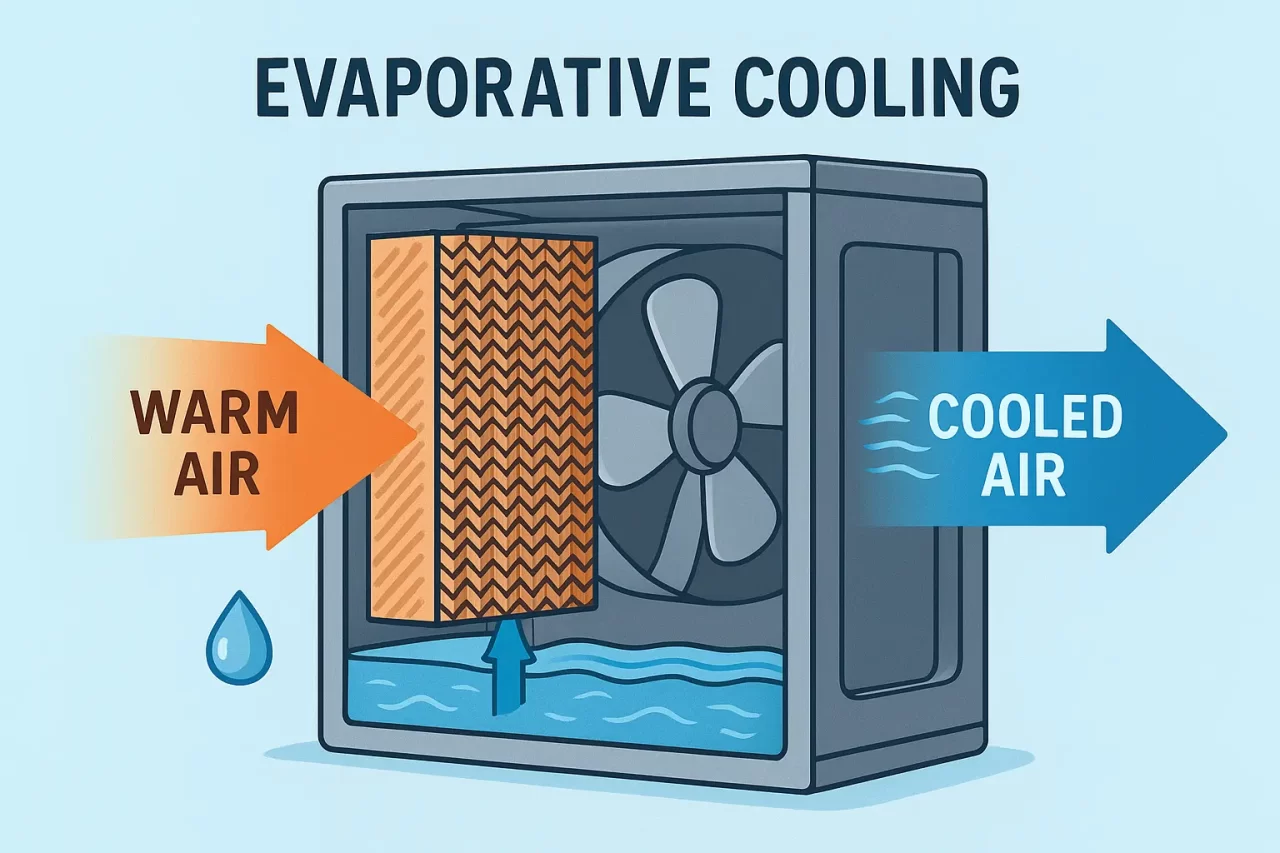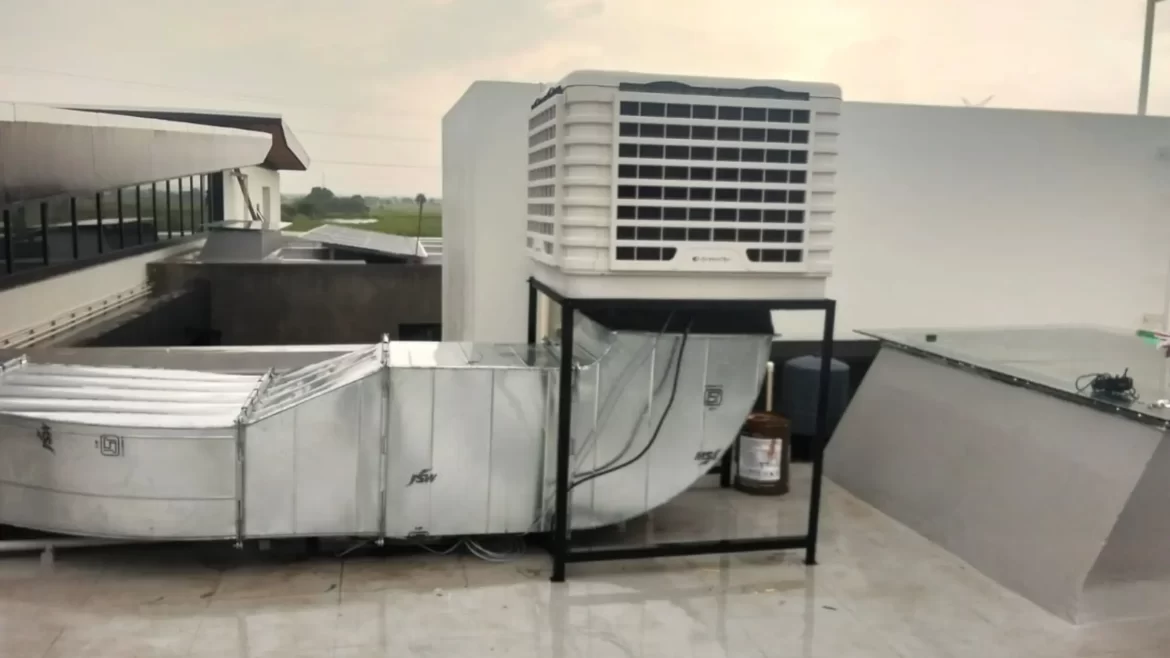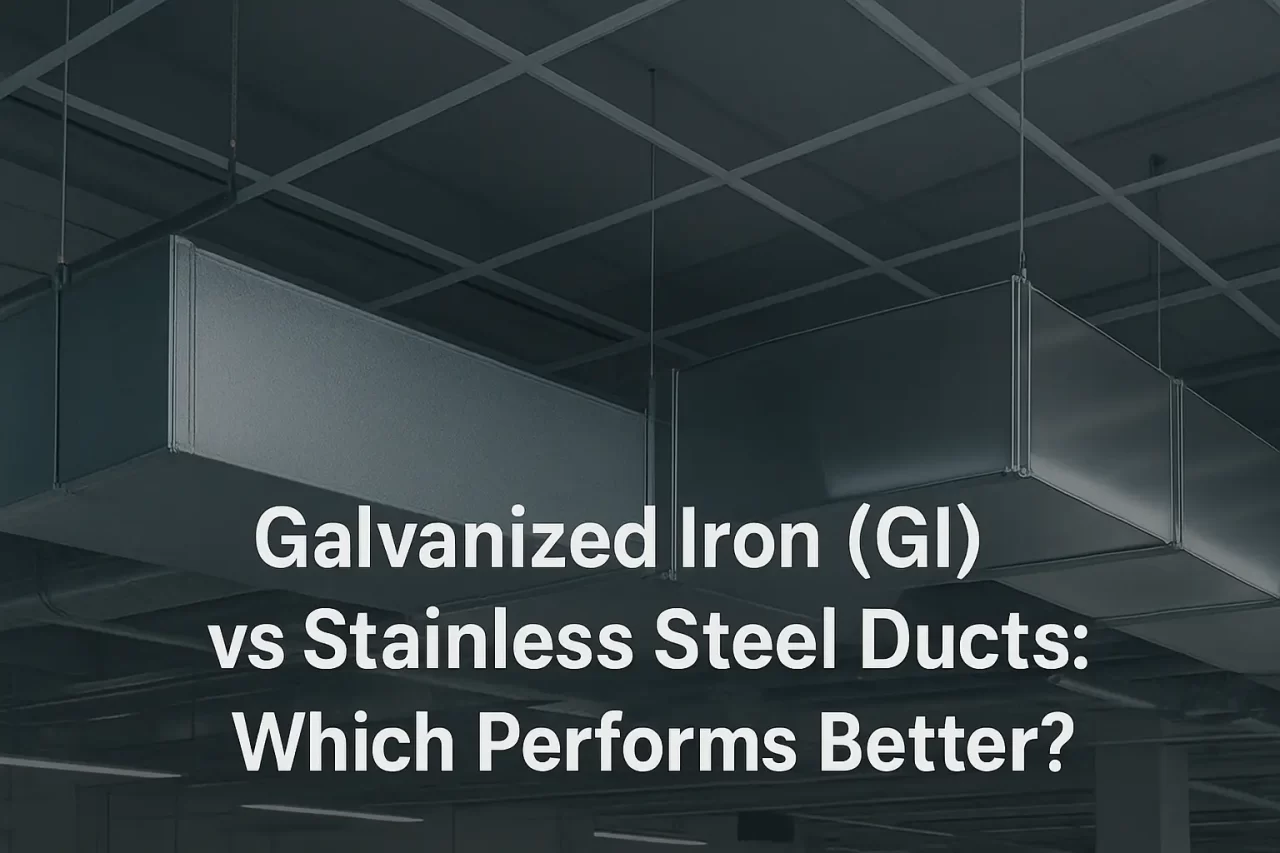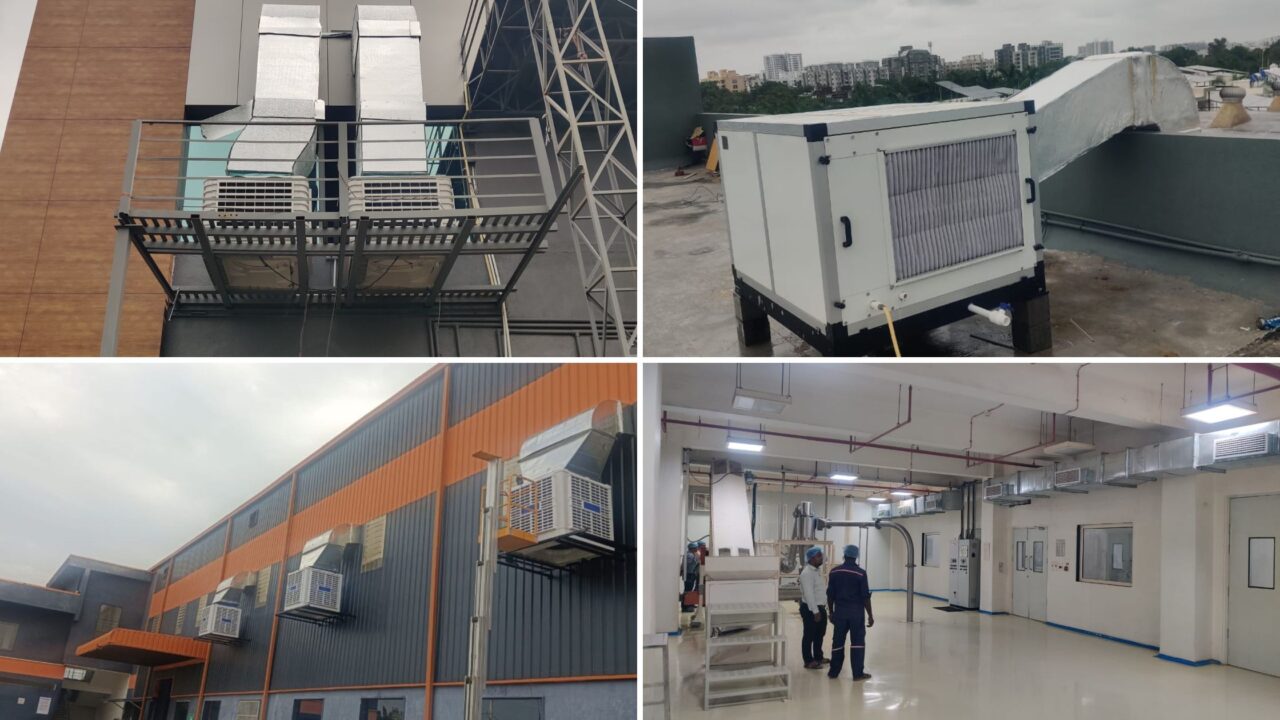Imagine walking into a factory in Indore on a 45 °C summer afternoon. Instead of the usual hot, suffocating air, you are welcomed by a cool, refreshing breeze. No air conditioners humming in the background, no massive power bills looming, just fresh, naturally cooled air.
That’s the magic of evaporative cooling. It is not a new idea—our ancestors used wet khus mats (vetiver grass) and earthen pots for cooling but today, the same principle is powering modern, energy-efficient HVAC systems across India. And in hot, dry regions like Rajasthan, Gujarat, and Madhya Pradesh, it is proving to be a game-changer.
How It Works (The Simple Science)
Think about how you feel when sweat evaporates from your skin; it cools you instantly. Evaporative cooling uses that exact principle.
Hot outside air is pulled through water-soaked cooling pads. As the water evaporates, the air temperature drops, and a fan circulates that cool, fresh air indoors. The drier the air, the stronger the effect, making it perfect for much of India’s climate.

Why It is Perfect for Indian Climates
In cities like Jodhpur, Jaipur, Indore, and Nagpur, summers are long, hot, and dry. Here, evaporative cooling can reduce indoor temperatures by 12–20 °C, making warehouses, factories, gyms, banquet halls, auditoriums, hospitals, malls, showrooms, hotels, places of worship, schools, and homes comfortable without consuming massive amounts of electricity
See Our Case Study Videos: Degree Day (@degreeday)
Unlike air conditioners, which recycle the same stale air, evaporative coolers deliver 100% fresh outdoor air a big plus for health in crowded workplaces and schools.
Benefits of Indian Businesses & Homes Love
1. Huge energy savings – Up to 80 to 90% less electricity than ACs, keeping power bills under control.
2. Lower investment – Easy to install and maintain; no complex refrigerants or compressors.
3. Eco-friendly – Just water and air—no harmful gases, no ozone damage.
4. Better indoor air quality – Fresh, filtered air improves comfort, reduces dust, and adds healthy humidity.
5. Boosts productivity – Comfortable workers mean fewer absentees and higher efficiency.
For industries like textiles in Surat, auto manufacturing in Pune, or warehouses in Delhi NCR, and factories in Lucknow, these savings directly improve the bottom line.
Challenges to Keep in Mind
– Works best in dry regions; less effective in humid states like Kerala or Bengal.
– Needs a steady water supply, which can be a concern in drought-prone areas.
– Requires regular cleaning of pads and tanks to prevent scaling or bacterial growth.
– Adds some humidity, which may not suit all indoor environments.
But for much of central, western, and northern India, the benefits far outweigh the limitations.
Applications of Evaporative Cooling
- Factories & warehouses – Keeping workers cool at a fraction of AC costs.
- Textile & garment units – Maintaining temperature control without damaging fabrics.
- Agriculture & poultry farms – Creating the right environment for plants and livestock.
- Educational institutions – Affordable comfort for schools and colleges.
- Retail & commercial spaces – Especially in Tier-2 and Tier-3 cities, where energy costs are a concern.
- Event venues – Large outdoor fans are common in wedding halls, pandals, and stadiums.
With rising electricity costs and government pushes toward energy efficiency, evaporative cooling is gaining attention as a sustainable HVAC solution. Innovations like solar-powered coolers, smart controls, and hybrid models are making the technology even more reliable for Indian conditions.
As India faces longer, harsher summers, this eco-friendly alternative to ACs will play a vital role in keeping people comfortable, cutting costs, and reducing carbon footprints.
Evaporative cooling is more than just a cost-saving option. It is a climate-smart solution designed for India’s toughest summers. Whether you are running a factory in Rajasthan, a warehouse in Madhya Pradesh, or even a school in Gujarat, this technology offers comfort, savings, and sustainability all in one package.
At Degree Day Pvt. Ltd., we design and deliver evaporative cooling solutions tailored for Indian industries, homes, and climates. If you are ready to cut electricity costs and keep cool naturally, let’s make it happen.
Frequently Asked Questions (FAQs)
Evaporative cooling uses water evaporation to cool hot air. Warm air passes through water-soaked pads, loses heat, and is circulated as cool, fresh air.
Unlike ACs, evaporative coolers don’t use compressors or refrigerants. They are energy-efficient, eco-friendly, and work best in ventilated or open spaces.
It’s ideal for large, well-ventilated or semi-open spaces such as warehouses, factories, workshops, greenhouses, and livestock farms. A minimum space of 500 sq. ft. is recommended for effective performance.
Depending on climate and humidity, evaporative coolers can lower the temperature by 7°C to 15°C (13°F to 27°F).
Yes. It consumes up to 80–90% less electricity compared to traditional air conditioning systems.








